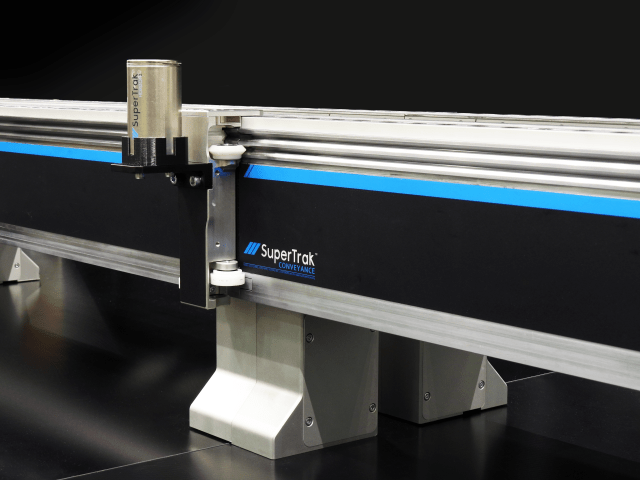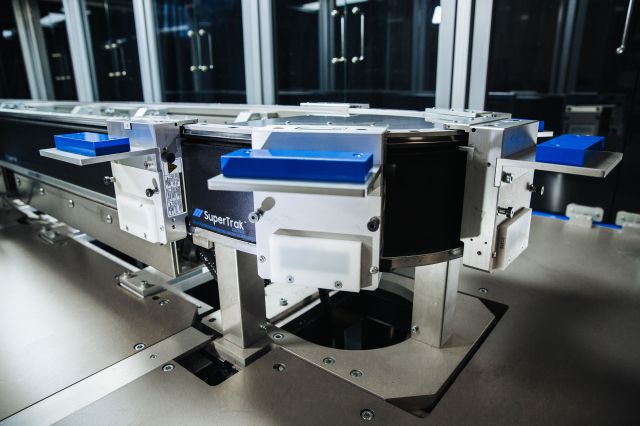There is a clear commitment in the automation space to push innovation and new technology forward.
In last month’s Around the Trak Blog, New Technology around Change Management, we highlighted several strategies and best practices to ease the challenges associated with implementing new technologies and help drive this change.
The other side of that discussion is who is responsible for deciding on what technologies to implement into the automation processes and what impacts the technologies will have on the business.
One thing that is becoming more prevalent in manufacturing organizations large and small, is the creation of an overarching technology owner. The responsibility of this role is to identify technologies that can be standardized across groups in order to support the overarching business strategy.
In order to do so, the technology owner:
- Researches technology and evaluate business impacts
- Completes initial trials
- Begins the change management process internally
Because there is one technology owner, manufacturers looking to automate are starting to realize the potential of integrating standard technology platforms across their organizations.
The rise of technology platforms
Technology standards in manufacturing are not new but they are becoming more widely accepted.
Governing bodies like UL, CE, etc. are in place to define a set of requirements and formalize minimum performance and safety needs. The implementation of standards both in technology and process across global organizations intuitively should unify the workforce. However, that has rarely been the case historically, as mentioned in a post on CIO.com entitled “Balance the battle between process variations and standardization.”
“90 percent of the organizations I know have failed at standardization,” says industry expert Steve Stanton, Managing Director, FCB Partners. “Doing business in our global, tech-driven and consumer-oriented world is becoming more and more complex.” - CIO.com
Despite implementation challenges, increasingly we are seeing many organizations continue to create and push for technology standards in their teams. There is a growing realization that when done well, standards can drive efficiency and support strategic objectives. Companies are creating centralized teams of experts within their organization to set company-wide standards for use of technologies across processes and geographies. These central groups are driving momentum for technological efficiency and easing change management challenges for companies large and small.
To see evidence of this, you need to look no further than the local job postings. You will see several postings for directors of automation standards and leaders for global automation implementation with a primary objective for standardization.
A balancing act
Integrating standard technology platforms across a series of teams within an organization is a balancing act. It is important that we acknowledge that before getting into why they are beneficial and how best to move forward.
The implementation of standards goes through the typical change management process but also has to manage two additional challenges:
- The perception that standardization can be limiting to teams in some areas of the organization.
- Balancing what is needed today with future requirements.
Both challenges can be overcome by combating organizational myopia. Myopia is generally used as a marketing term used to describe a company that focuses on their needs instead of defining the company and its products in terms of the customers’ needs and wants. It results in the failure to see and adjust to the rapid changes in their markets.
In a more general sense, marketing myopia can be seen across many organizations and the way they operate. Too often, businesses lose sight of what their customers need, and as a result, organizational priorities suffer.
In order to succeed, organizations must overcome myopia and collectively continue to look for the most efficient and effective way to serve their customer.
With this in mind, we must treat the different groups inside our organizations that are impacted by technology standards as the customer. We must never lose sight of what those internal customers need as well.
“Take a look at the landscape of newly successful companies of the present day and you’ll probably find a future pigeon or two in the bunch. But you’ll also be able to pick out the companies that are built to last in the very long run, not because of the technology they’ve built, but because of how they focus on solving pain points within their customers’ journeys”. – Inc.com
The challenge in avoiding myopia is ensuring that everyone impacted by standards truly understands the business that you’re in and how a standard improves your ability to execute on that business. Those technology standards are removing the pain points in the journey. This is a direct call back to the fundamental importance of “the why” when driving change.
The best example I have observed recently is a team of designers within a global organization coming together across three different geographical sites to standardize on a common frame design for their automation.
Historically, there have been challenges creating standards because a design approach or specific geographical requirements always lead the conversation to a dead end.
In this case, however, the team saw the potential for supply chain savings and organizational efficiency by overcoming the historical hurdles. A compromise was found and now all sites order the same component, from the same supplier, leading to a consolidation of spend and an alignment of design practice.
The critical few
The critical few is a driving thought process for whatever change you are trying to make.
The idea was popularized by John Katzenbach in addressing organizational culture change in his book “The Critical Few”. It is very important when discussing the standardization of technology that the focus in on areas that really drive impact within the business. Trying to standardize all aspects of a process will ultimately result in being one of the 90% of companies that fail at standardization.
The critical few are unique to each business, they cannot be defined in an article or short post. They depend on the strategic objective, the specific customer requirements, and the resources available. Many business leaders understand this and it is why we are seeing the creation of an overall organization technology owner. That role puts the owner in a good position to identify the critical few and focus on the most impactful places to standardize.
A recent conveyance example I encountered was where a company didn’t have the machining resources available to create large dials and as a result, always needed to outsource this aspect of their business. Because they did not have ready access to the required resource, their integration would often be delayed due to the implementation of change.
The designers saw the opportunity to standardize on the SuperTrak GEN3™ platform understanding that they would most likely see an increased material cost upfront but realized that the downstream benefits of responsiveness, labor efficiency, and project control would justify the business case for standardization. The balancing act here was very apparent with benefits vastly outweigh any downside.
The overall benefits of standardization
The example above drives home some of the key benefits we see from standardization:
- Design throughput increases due to known modules to begin with.
- Speed to market increases due to expertise and control reside internally.
- Cost reduction occurs due to an increased volume and consolidation of spend.
When reviewing the value stream and process for equipment creation we can identify additional advantages. The “Deviation Spiral” below taken from Benjamin Brandall’s article, “Why Process Standardization Improves Quality, Productivity and Morale”, outlines how process standardization is associated with leaner, more functional performance, meaning your organization can cut waste and do more with available resources.

The same benefits outlined by Brandall, hold true in equipment design and implementation. The driver behind standardization is that the organization becomes more efficient as a whole because there is an expectation across groups what tools are available to them. What tools are in the toolbox per se. This reduces the amount of deviation throughout the entire value stream, which increases the efficiency of the organization as a collective and ultimately improves our ability to serve customers.
The ideal state is a world in which the design, supply chain, integration, and support teams are all working with components they are familiar with. While each stakeholder may have preferences based on their specific requirements, the value stream is more efficient when we are working with an aligned set of expectations. There is less uncertainty to work through, less training to overcome, and a generally more straightforward process for change management.
The constraints of standardization that I hear most often are the form factor, interface, and function are defined which can create challenges in specific examples. Looking at the deviation spiral as well as the two examples highlighted, you can see that there is often a case where the benefits will outweigh any concerns.
Another common rebuttal to standardization is that it will stagnate or curb the creativity or innovation within the business. Driving innovation is something that I am personally invested in and passionate about. I have had the opportunity to visit and speak with many people and organizations about how they drive technology development. I have not personally encountered a situation where standards diminish innovation. In practice, the largest driver to stagnated automation is a lack of time to step away from the day-to-day and work to innovate.
We commonly hear the term “firefighting” used to describe our workdays. Utilizing standards is a method to drive efficiency and reclaim some time in our day to focus thought on what comes next, rather than what is in front of us. This ultimately drives more creative thought, not less.
Communication is key
There are a number of benefits that we’ve highlighted in the use of standard technology platforms. While there are tradeoffs, I believe they are generally summarized by more effective communication and expectation setting across large organizations. Any downside of settling on a technology toolbox is typically offset by an aligned understanding across a broad team of experts of the toolsets that are available to them. Alignment of expectations accelerates time to market, reduces maintenance and supply costs, and allows for more mobility throughout the organization. With the business climate ever-changing, these benefits will serve companies more effectively than ever before.
Technology standards within organizations are one of the more challenging implementations of technological innovation and change management. They are also the most fruitful which is why we are seeing a rise in standardization in organizations large and small.
Leaders should focus on standards that will drive the business strategy and improve the customer journey. The “critical few” platform selection will help align the various stakeholders across the organization and set you up for saleable, repeatable, and most importantly, sustainable success.
Learn how your organization can experience the benefits of standardization by utilizing SuperTrak CONVEYANCE as the foundation for your automation.
Get in touch with the SuperTrak Team to discuss: supertrakteam@atsautomation.com






